They call Connie Kennedy the Queen of the Snake River.
In 2024, during a single trip down the Snake, which twists through Hells Canyon in Idaho, she steered a raft past a swimming black bear, threaded the needle into a notorious wall of water dubbed The Green Room, told stories about the people who once lived in the area, and held down the fort as a brief but mighty squall blasted through camp, sending tents sailing.
In between it all, the 70-year-old, 5-foot 2-inch guide kept more than a dozen guests laughing as they made their way along the ribbon of green, which arcs across southern Idaho then bolts north along the Oregon and Washington borders.
The five-day adventure marked just one trip in Kennedy’s 40th year of guiding trips along Idaho’s twisting waterways.
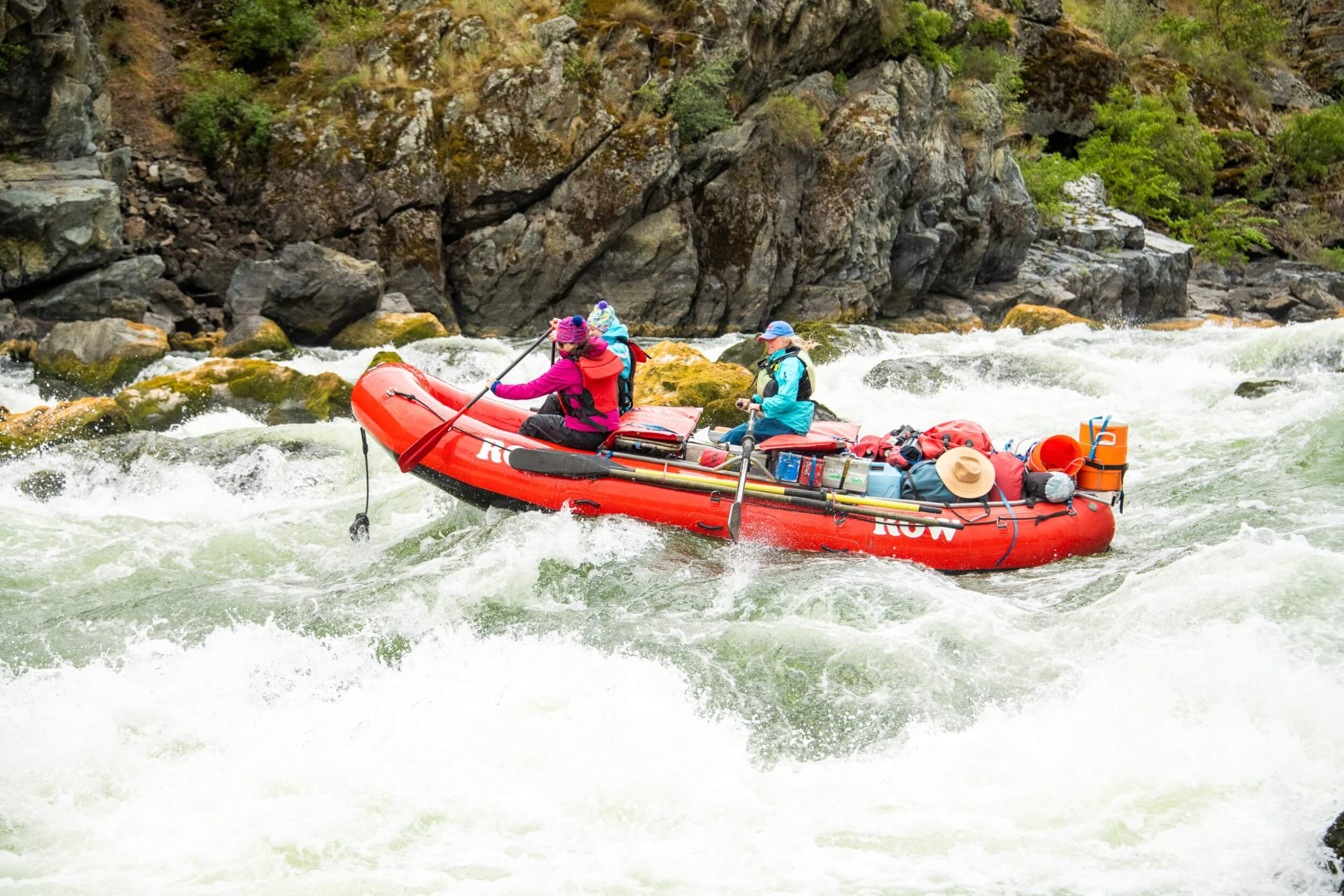
Kennedy was working as a cashier at a Nebraska grocery store called Hinky Dinky in the 1970s when her husband Mike saw a National Geographic special about twin brothers Frank and John Craighead, naturalists and conservationists who’d rafted the Salmon River, another famous river in Idaho. Instantly, he was intrigued. “He watched that when I was at work one day,” Kennedy says. “It took his imagination.”
The enthusiasm soon spread. Inspired by the documentary, the Kennedys bought their own raft and began exploring rivers in Colorado. They couldn’t run Idaho’s famous Salmon River just yet, because that required a hard-to-obtain permit. But they learned the basics – and learned they loved life on the river. “We probably did everything wrong,” she says. “And we drug a bunch of friends with us.”
In the late 1970s, the couple finally landed a coveted permit to run the Salmon. The river’s wide sandy beaches, churning rapids and historic sites captured their hearts, and when they finished that run, they stopped in the nearby town of Riggins, known mainly for its sawmill.
“The Salmon, to this day, is my first love,” Connie Kennedy says.
A few years later, when Mike Kennedy learned that a rafting company had opened in Riggins, he contacted the owners. “That’s when he realized that rafting was something he could do fulltime,” Connie Kennedy says. “We moved out the next year.”
That was 1982, and two weeks after the couple relocated, the town’s sawmill exploded and burned down, taking the community’s main source of employment with it. But Riggins was lucky. A river ran right through the town, carrying with it a promise of economic recovery. “Rafting, hunting and fishing saved town,” Connie Kennedy says. “It changed from an extraction-based economy to recreation based.” The community turned its attention to outdoor pursuits.
For the next four years, while her husband guided rafting trips, Connie drove customers to and from the launch point. Between trips, she got to know her neighbors, many of whom had lived in Hells Canyon before it became a national recreation area in 1975.
Then, in 1985, she exchanged the bus keys for a lifejacket and began working as a guide herself. “I had had enough of putting lifejackets on someone and seeing them disappear around the corner,” she says.

She’s been at it for 40 seasons now, guiding between 10 and 12 river trips a year since 1985. That means she’s logged more than 400 multi-day rafting trips since she started guiding. “The things I like best are being outdoors a big part of the time and getting to know a place intimately well – along with the camaraderie with fellow guides and crew and guests from all over the world,” she says. “Living in a little town can be kind of insulating, and it gets me out in the world. I love that.”
The hardest part, she says, is the cumulative effect of the long, physical days, which start at 5:15 a.m. and wrap up late at night. In between she helps prepare meals, sets up and breaks down camp, loads gear, guides hikes to historic sites, manages other crew members and makes sure guests are well taken care of. “The rowing is a piece of cake,” she says.
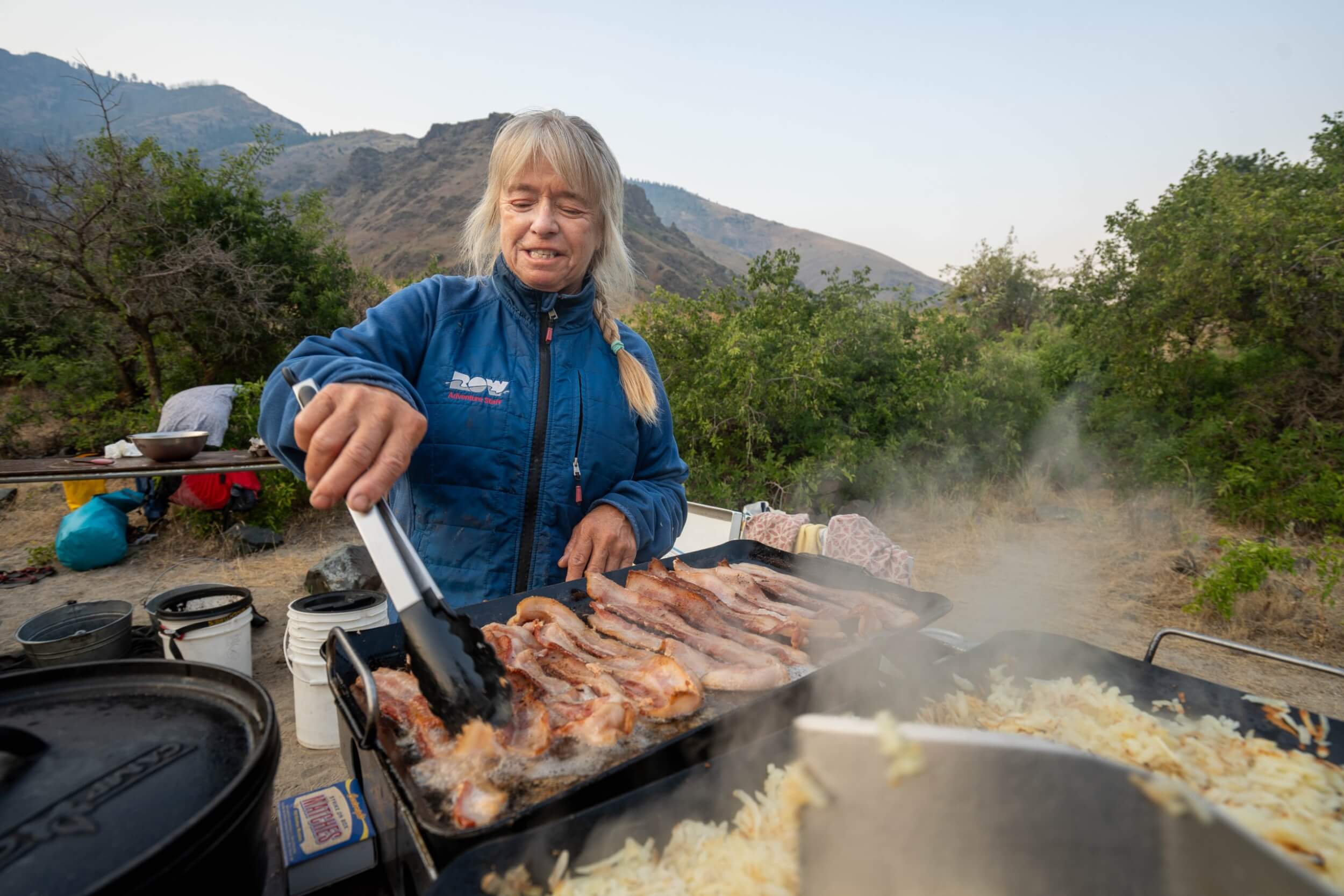
Kennedy says people ask her all the time what it takes to be a guide. For her, it’s a love of the outdoor life and a willingness to work hard in a place she loves.
“First of all, you have to embrace poverty as a lifestyle and that discourages a lot,” she chuckles. “I love our guides, they’re young and outdoor oriented. They could be in basements playing video games but they’re out here.” It takes the right personality and a proper attitude to make it work, she says. “The people who make it a career are a small percentage,” she says.
Early on, she was one of only a handful of female guides in the business, but that’s changed over time. “In recent years it’s really intensified,” she says. “Now it’s about 50-50 male to female guides.”
Although she spends her days heaving gear and moving boxes and crates – she calls the exercise a fringe benefit – she insists it doesn’t take brute strength. “It takes endurance and being able to read the river. I think women are good at it because they don’t try to outmuscle it,” she says.
She has worked with ROW Adventures, which offers multi-day rafting trips in Idaho and Oregon, since 2012. The company is known for hiring female guides. “She’s an inspiration to all the women here,” says Shania Baxter, who worked with Kennedy at ROW in 2024. Crew member Amelia Wach agrees. “Show me another 70-year-old woman who can balance across the bow of a raft while carrying two heavy boxes,” Wach says.
Kennedy’s knowledge of the history and people who lived in Hells Canyon, the deepest river gorge in North America, runs deep. Native Americans, miners, trappers and homesteaders have all called the area home over the years, and Kennedy knew some of the last people who lived there, including Ace Barton. She relates their experiences – as they were told to her first-hand – when the rafts stop during the day for exploratory hikes.
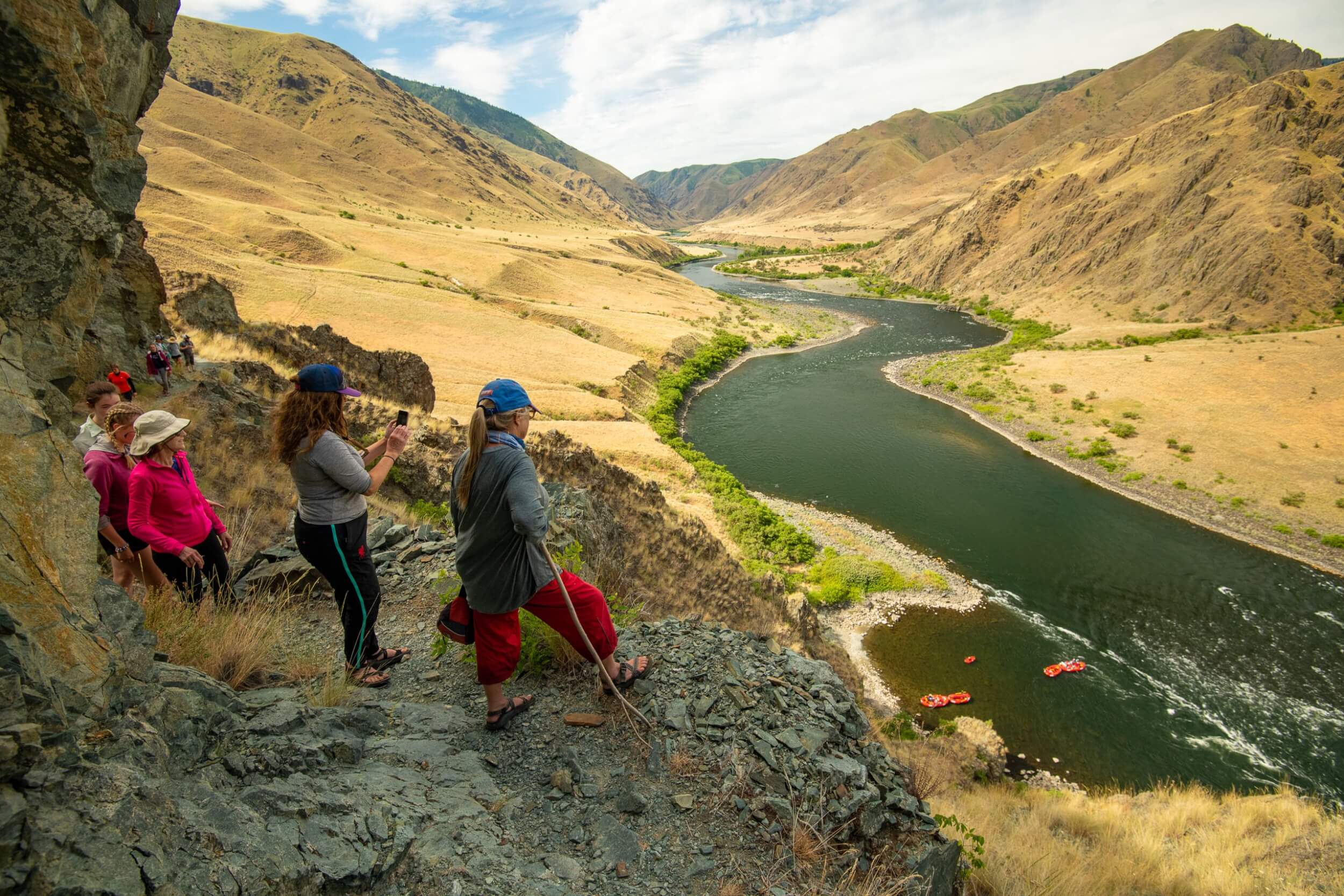
Through the job, she’s met all kinds of people, from NASA engineers to paleontologists, musicians including Vince Neil of Motley Crew, and even a professional log roller. She encourages visitors to raft Idaho’s rivers because, as she says, “it’s public land – their land – and rafting lets you see it in a different way than driving a car through Yellowstone National Park. You’re forced to slow down, go with it and savor it.”
She says she misses the river during the offseason. During the winter, she drives shuttles for anglers, helps at a local catering operation, and works odd jobs for the city of Riggins – including clearing out irrigation ditches that run behind homes in the small town.
She also keeps three horses – Stilts, Angel and Volunteer – at a nearby ranch. “Sometimes I get absolutely stir crazy, and instead of driving to where my horses are pastured, I walk there,” she says. For Kennedy, the job is a perfect fit, one that keeps her moving through rugged landscapes and into rapids sculpted by rockslides and boulders.
And she isn’t done yet. Kennedy says she’ll keep going until she can’t do it anymore. And that doesn’t’ seem likely anytime soon,
“She inspires all of us – we better keep up with Connie.” says Michael Rodermund, in his 17th year as a rafting guide.
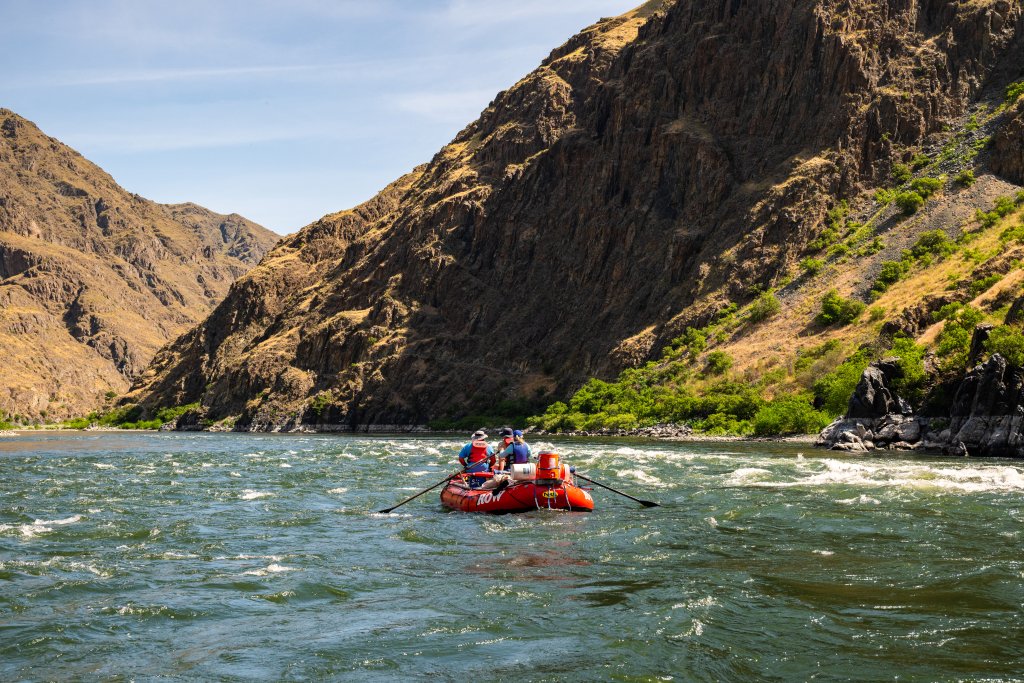
Feature image credited to Logan Carter/ROW Adventures.
Pam LeBlanc is a longtime journalist based in Austin, where she covered fitness and recreation for the Austin American-Statesman for 21 years. She’s on the loose today as a freelance writer who specializes in stories about outdoor adventure and travel. Learn more about her at PamLeBlancAdventures.com.
Published on August 25, 2025
